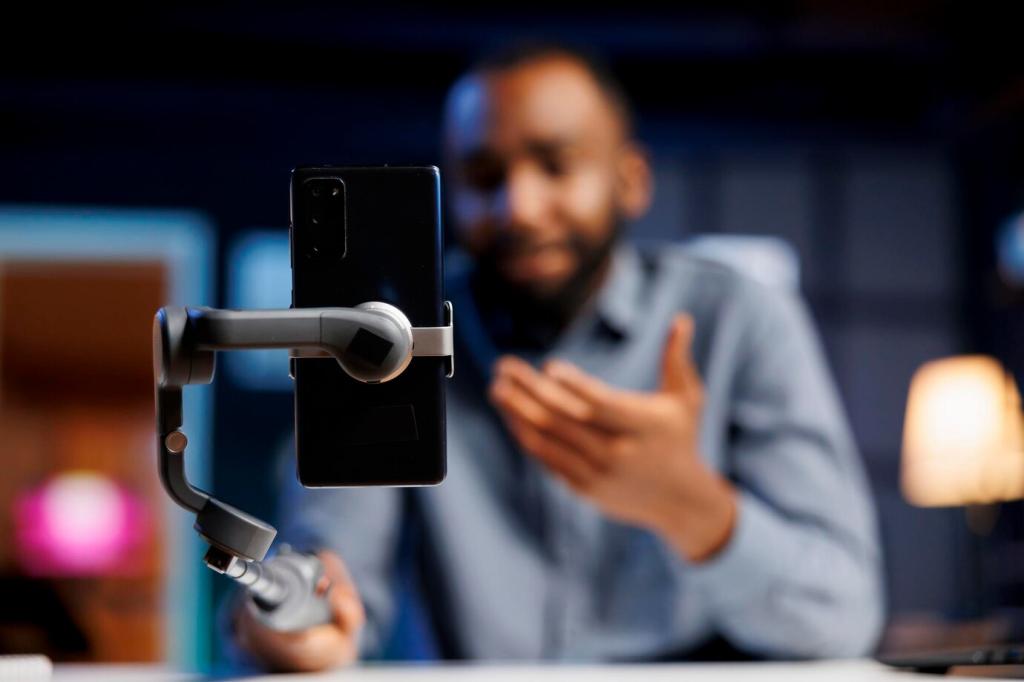AI in Journalism: Revolutionizing News Gathering
The New Reporting Toolkit: Smarter, Faster, Stronger
Natural language processing filters forums, public filings, and social channels to surface early signals and credible voices. Reporters start mornings with prioritized leads, not endless tabs, freeing time for interviews and deeper reporting. Tell us what signals you need most.
The New Reporting Toolkit: Smarter, Faster, Stronger
Automatic transcription turns late-night briefings and roadside recordings into accurate, searchable text. Time-stamped speakers and quick keyword jumps mean fewer missed quotes and faster publication. Share your toughest audio scenarios, and we’ll test methods that actually hold up.
The New Reporting Toolkit: Smarter, Faster, Stronger
Instead of constant ping fatigue, adaptive models learn which topics, regions, or entities matter to your beat. Alerts evolve with your interests and mute repetitive chatter. Want a template for setting priorities? Ask below and we’ll send a practical checklist.
Verification at Warp Speed
Spotting deepfakes before they mislead millions
Computer vision flags artifacts in lighting, shadows, and facial dynamics that hint at synthetic media. While tools assist, human oversight confirms context and intent. Want our quick guide to deepfake red flags and ethical framing? Subscribe and we’ll send it.
Geolocation and satellite cues that anchor the story
Combining terrain features, architectural patterns, weather records, and satellite imagery, AI-assisted OSINT helps pinpoint where footage was captured. Accuracy improves when local knowledge meets machine pattern matching. Tell us which regions you cover, and we’ll suggest specialized datasets.
Cross-referencing names, dates, and claims in seconds
Entity resolution tools match people, places, and timelines across databases, court records, and archival clips. Contradictions surface faster, prompting follow-up calls rather than dead ends. Want a walkthrough on building a simple cross-check pipeline? Comment “pipeline” to receive it.
Data-Driven Discovery
Algorithms scan budgets, contracts, and procurement logs to highlight irregular vendors, timing spikes, or pricing outliers. These hints guide calls, not conclusions, keeping the human at the center. Post a pattern you’re curious about, and we’ll suggest next steps.

Ethics, Accountability, and Editorial Judgment
Auditing bias so algorithms do not amplify blind spots
Bias testing across demographics and regions helps ensure tools don’t overrepresent loud voices or underreport marginalized communities. Periodic audits, diverse datasets, and clear escalation paths matter. Want a bias audit template? Subscribe and we’ll deliver a practical draft.
Human-in-the-loop workflows that keep reporters in control
From suggestion to publication, reporters approve, revise, or reject model outputs. Checkpoints document decisions and preserve editorial standards. Curious which steps to automate first? Tell us your bottlenecks, and we’ll map low-risk pilot ideas.
Radical transparency that earns reader trust
Clear labels explain when AI aided transcription, translation, or analysis. Method notes invite scrutiny and feedback, strengthening relationships with audiences. Would you publish a methods box with each investigation? Comment yes or no and tell us why.
Neural translation accelerates multilingual reporting while custom glossaries preserve community terms and names. Reporters add cultural nuance before publication. Need tips on building a terminology list with readers? Ask, and we’ll share a reader-sourced approach.
Local News, Global Reach
One regional team used transcription and story templates for city meetings, freeing hours for enterprise work. Their audience noticed deeper coverage, not robots. Want their playbook for starting small? Comment “local” and we’ll summarize key steps.
Local News, Global Reach
Safety, Security, and Source Protection
Local models or restricted endpoints minimize data exposure when handling confidential interviews, documents, or images. Teams define red lines for what never leaves secure environments. Want a deployment checklist? Subscribe for our privacy-first starter guide.
Becoming T-shaped: craft meets computation
Deep reporting remains your vertical; data, code, and design become your horizontal. You do not need to be an engineer—just curious, methodical, and collaborative. What skill do you want to learn next? Tell us and we’ll curate resources.
Prototyping with purpose
Small pilots—like a verification notebook or translation workflow—create momentum and trust. Measure impact with time saved, accuracy improved, or stories uncovered. Want a simple scoring sheet? Comment “pilot” and we’ll send a printable template.
